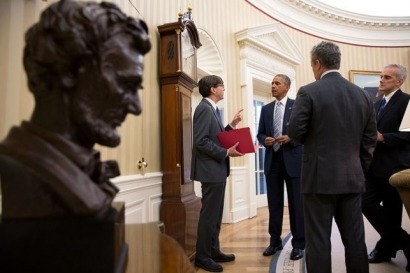
The measures are the work product of the president’s State, Local and Tribal Leaders Task Force on Climate Preparedness, which has been working on them since late last year.
Speaking in the US state of Montana, the president announced, among other things, that the Department of the Interior’s (DOI) Bureau of Indian Affairs will launch a $10 million Federal-Tribal Climate Resilience Partnership and Technical Assistance Program that will help tribes prepare for climate change by developing and delivering adaptation training.
Secretary of the Interior Sally Jewell and Environmental Protection Agency (EPA) Administrator Gina McCarthy will establish an interagency group to provide tribes with data and information, improve Federal collaboration, and assist with climate change adaptation and mitigation efforts.
In addition, the US Department of Agriculture is awaring a total of $236.3 million in funding for eight states to support improvements to the nation's rural electric system.
President Obama stressed that a modern, reliable electric system is critical to attract and retain residents and businesses in rural communities.
Supporting rural electric utilities' deployment of smart grid technologies will increase efficiency and reliability and bring more jobs to rural America, he said.
The White House also announced the US Geological Survey and other Federal agencies have begun a $13.1 million 3-D Elevation Program partnership designed to bring Federal agencies, academia, corporate entities, states, tribes, and communities together to develop advanced 3-dimensional mapping data of the United States.
These data and related tools will be used in the areas of flood risk management, water resource planning, mitigation of coastal erosion and storm surge impacts, and identification of landslide hazards to support climate resilience.
The president also announced new details relating to the $1 billion National Disaster Resilience Competition he announced on June 14.
The competition will make resources available to communities that have been struck by natural disasters in recent years.
Building on the success of the Rebuild by Design competition after Hurricane Sandy, this competition will create replicable models of modern disaster recovery that apply science-based and forward-looking risk analysis to address recovery and resilience needs.
The competition will also help communities create and implement disaster recovery plans that will make them better prepared for future extreme weather events and other shocks.
Today the president revealed the year-long competition will have two phases: (1) risk assessment and planning; and (2) design and implementation.
Many communities will be eligible for funding and technical assistance during Phase 1 to develop innovative, data-driven, and community-led approaches to recovery that increase preparedness for future disasters.
A subset of these communities will be invited to continue in Phase 2 to design solutions for recovery and future resilience. The best proposals will receive funds for implementation to demonstrate how communities across the country can build a more resilient future, he said.
For additional information:

